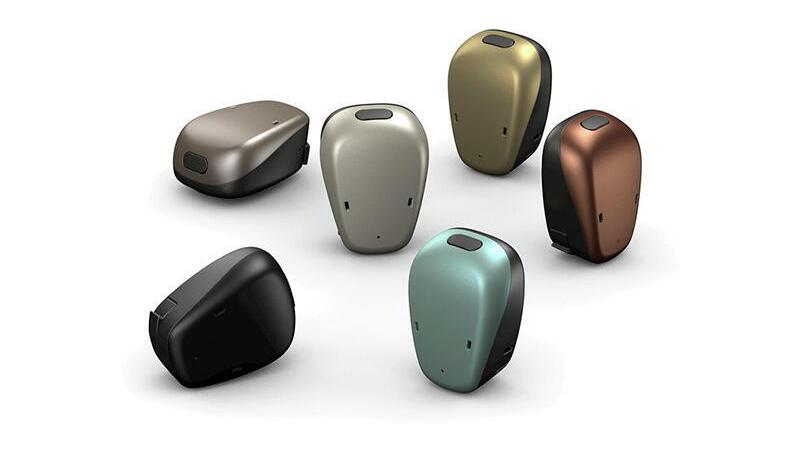sorry to hear of your loss
my bro had same issue he got a BAHA =bone anchored hearing aid which transmits sound fr one ear the dead left to the right they drill a hole in your skull and leave a small titanium stud there
the BAHA snaps on to and Off there is a picture of one below it is small self-contained costs like $4-6 K ( and yes insurance/ Medicaid pays for it )
the audiologist said most people acclimate to the time delay but he managed NOT to .
so he STILL has a small but real perception of sound ( albeit reduced ) as 3 dimensional you might talk to a audiologist who does BAHA implants it is a titainium post in your skull a BAHA is the best of all hearing aids he has had it about 20 years! was done @ Mayo clinic there are also cochlear implants and a middle ear type implant ? < ask a audiologist who is familiar w/ them NOT just a garden variety hearing aid dispenser ! they do not know squat about BAHA ’s
quite possible depending on your medical issue ? you COULD be a candidate !
he has learned how to flunk the hearing test ( pretend it is worse than it is ) so he can now be a candidate for a cochlear implant .
nowadays the deaf hear ! possibly YOU could too in your dead side ! do not give up hope Most insurance and Medicaid pays for this technology
technology is great !
Bone-anchored hearing aids (BAHA) are surgically implanted devices that may partially restore hearing for people with certain types of hearing loss. BAHA hearing aids use vibrations through the bones in your skull to send sounds to your inner ear.
( + it is w/ out a doubt the BEST hearing aid of all so get out all your old gear and enjoy "stereo" again ! )
ContentsOverviewProcedure DetailsRisks / BenefitsRecovery and OutlookWhen To Call the DoctorAdditional Common Questions
Overview
What is a bone-anchored hearing aid (BAHA)?
Traditional hearing aids amplify sound through your middle ear. In contrast, a bone-anchored hearing aid (BAHA) is a surgically implantable device. It sends soundwaves through the bones of your skull directly into the cochlea (a spiral structure in your inner ear that plays a key role in hearing). Another name for this device is bone-anchored hearing implant (BAI). While BAI is the medically correct term, people use BAHA and BAI interchangeably.
A bone-anchored hearing aid may restore partial hearing in people with certain types of hearing loss or those who aren’t good candidates for traditional hearing aids.
A BAHA traditionally consists of three parts:
- Titanium implant.
- External connector.
- Sound processor.
Types of bone conduction hearing systems
There are two main types of bone conduction hearing systems:
- Surgically implantable bone-anchored hearing aids (BAHA). This is the most common type. A surgeon places a small titanium implant in the bone behind your ear. Once the implant heals, you can attach the external sound processor to restore your hearing. You can remove the processor when you’re sleeping, showering or having hair treatments.
- Nonsurgical bone conduction hearing aids (BCHA). Providers typically recommend nonsurgical bone conduction hearing aids (BCHA) for children under age 5 and people who don’t want surgery. Some bone conduction hearing aids attach directly to your skin with adhesive. Others attach to a headband that you can wear as needed.
Your otolaryngologist (ENT) and audiologist can help determine which option is right for your situation. Bone-anchored hearing aid candidacy depends on several factors, including your age, medical history, type of hearing loss and personal preferences.
During an office visit with your healthcare provider, you can try out a nonsurgical BCHA. This helps you get an idea of how this type of hearing system works before you have surgery.
Conditions treated with BAHA hearing aid
BAHA hearing aids may work for people with:
- Conductive or mixed hearing loss (when sound doesn’t travel through your ear as it should).
- Single-sided deafness (one ear has hearing, the other has little to no hearing).
These types of hearing loss can result from conditions like:
- Chronic middle ear infections.
- Cholesteatoma.
- Acoustic neuroma.
- Ménière’s disease.
- Malformation of your outer ear or middle ear (aural atresia).
To find out if you’re eligible for a bone-anchored hearing aid, talk to your healthcare provider. They can refer you to an otolaryngologist for an evaluation.
Cochlear Baha System | Bone Anchored Hearing Solutions
https://www.cochlear.com › products-and-accessories
Experience improved sound quality with Cochlear Baha System - a unique, bone anchored hearing solution for those with SSD, conductive or mixed hearing loss.
Baha® 6 Max Sound Processor · Baha® Implant · Baha® Start
also look @
A middle ear implant (MEI) is a surgically implanted hearing device that treats hearing loss by stimulating the inner ear:
-
How it works
An MEI converts sound waves into vibrations that stimulate the middle ear bones, which then increases the vibrations that reach the cochlea. The cochlea converts these vibrations into electrical signals that are sent to the brain.
-
Who it’s for
MEIs are used when other hearing devices aren’t an option for medical reasons, or if they don’t provide adequate hearing. MEIs can be an option for children ages five and up with conductive, sensorineural, or mixed hearing loss.
-
Benefits
MEIs can improve sound quality, patient comfort, and hearing thresholds compared to conventional hearing aids.
PS he also has remote control for it and wireless Bluetooth that connects the BAHA hearing implant to the HT / TV system !
so he gets sound fr his good ear AND from the BAHA implant ! you learn to NOT acclimate to the slight sound delay hence hear a type of "stereo "
there is an app on his smart phone to control it !


